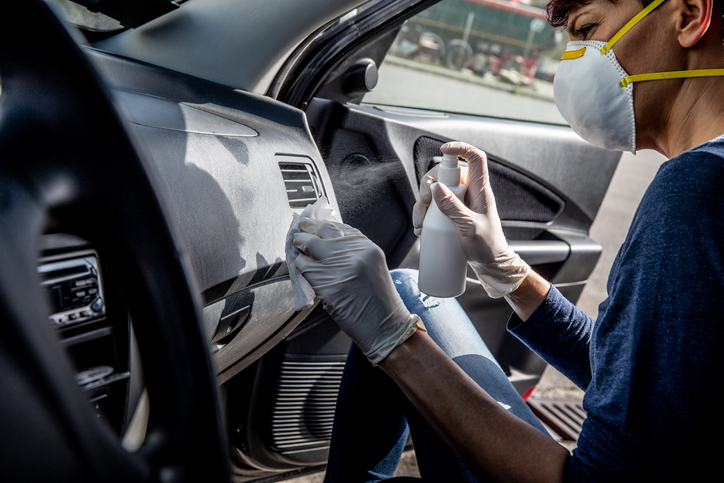Editor’s note: Andy Turton is SVP ENGINE Insights, Westlake Village, Calif. This is an edited version of a post that originally appeared under the title, “Adapt and thrive: the auto industry’s report card.”
The auto industry’s surprising robustness
 With the auto industry reeling, this might seem like a perfect time for new mobility services (NMS) like rideshares to take advantage – the COVID-19 pandemic slammed the auto industry hard and while monthly sales have recovered somewhat from the initial dramatic drop in March and April, full-year forecasts are still 15% down on a year ago. Like a weakened heavyweight against the ropes, the auto industry looks like it might buckle with a few well-placed blows from a nimbler opponent.
With the auto industry reeling, this might seem like a perfect time for new mobility services (NMS) like rideshares to take advantage – the COVID-19 pandemic slammed the auto industry hard and while monthly sales have recovered somewhat from the initial dramatic drop in March and April, full-year forecasts are still 15% down on a year ago. Like a weakened heavyweight against the ropes, the auto industry looks like it might buckle with a few well-placed blows from a nimbler opponent.
NMS business models are fundamentally built for the digital age in which we live. All of them (car-sharing, ride-sharing, bike-sharing and numerous other mobility-as-a-service models) have been enabled by the consumer’s widespread adoption of digital technologies. Each one operates on a fundamentally consumer-centric business model by providing on-demand and shared services business models, based squarely in the belief that transportation products must be responsive to traveler wants, needs and preferences. In contrast, automakers still make most of their money through a supply model which is designed first and foremost with their own needs in mind, i.e., to cover high factory costs and to defer risk by operating dealer networks designed to hold and sell inventory, the root cause of the car sales behaviors that so many find off-putting.
And yet, despite the NMS challenge and the dent to sales and profit delivered by COVID-19, the traditional auto business model has proven to be remarkably resilient. To be clear, the industry has not stood idly by in the face of the onslaught of the NMS business challenge, indeed every OEM is developing or has launched its own versions of on-demand services. And the growth of EVs is propelling further innovation too, with the launch of new brands and new paths to market which will no longer require vast dealer networks. Even so, for now at least, it’s still fair to say that the primary auto business model remains fundamentally old-school.
An unexpected shot in the arm
ENGINE’s July 24-26 CARAVAN survey of U.S. adults revealed that far from opening the way to faster adoption of NMS business models, the pandemic has given the traditional auto industry an unexpected boost. In May 2020, a fifth of consumers expected that they would use their vehicles more often once the pandemic is controlled and that number rose to more than a quarter in July 2020. In parallel, likely future use of every form of shared transportation declined, including many NMS business models – rideshares, taxis, trains, buses and subways. And the reason is clear: the virus transmits easily in confined shared spaces and anxiety about contracting the disease continues to run at very high levels. Previously well-adopted NMS models like Uber and Lyft are down as a result of concerns about just how hygienic they will be.
The net effect is encouraging for the auto industry – 42% of U.S. car owning adults intend to replace their current car at some point in the next five years and 53% expect to continue to use the vehicle they currently use as their primary form of transportation, rather than reducing its use and adopting an alternative NMS model instead.
The next five years
There are a further 5% of American adults who fully intend to sell their vehicle in the next five years and not replace it. For half of this number, cost is the primary driver; with a third of households expecting to be worse off after the pandemic is controlled, the cost of vehicle ownership may be beyond their reach, at least for a while. The other half are the group that excite NMS providers, though – these consumers will dispose of their vehicles without replacing them because they believe that NMS business models can provide access to vehicles as and when they need them and in ways that they find preferable to the ongoing cost of vehicle ownership.
This is the seed that NMS providers hope might yet kill off the traditional auto industry. It’s taken 20 years to reach this point but now that approaching 3% of U.S. households are ready to forego vehicle ownership the question for every interested party becomes one of time and resources: How quickly will conditions be right for an exponential growth in NMS adoption at the expense of vehicle ownership? And for the OEMs, the central question becomes: Can we secure enough of the NMS-dominated world to grow profits beyond the levels provided by the traditional auto industry model? And, if so, how?
It’s no longer a question of if the traditional auto business model will die, it’s just a matter of when. Answers are needed sooner rather than later, but for now there are still plenty of cars to be sold!
